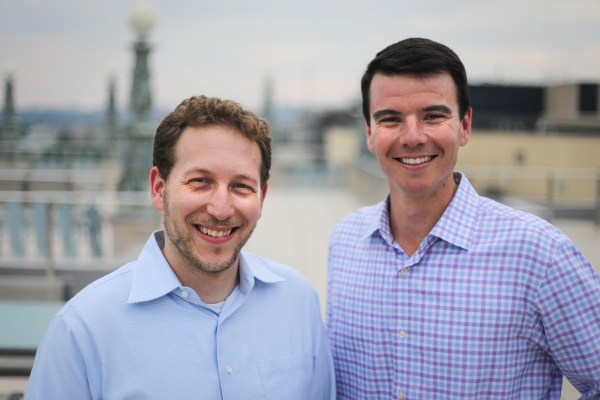NextGen Venture Partners, a young, Washington, D.C.-based venture firm that’s quarterbacked by a handful of investors but fueled financially by a network of hundreds of part-time investors who help with its portfolio, has raised $22 million for its debut fund. (This if you don’t count a $1 million pool of capital that it raised from its network in 2015.)
We had a quick chat with Jon Bassett, one of the firm’s five partners, late last week to talk about what NextGen is trying to create. That conversation has been edited for length.
TC: NextGen evolved from a group of angel investors, correct? Was this a formal investor group that’s just been renamed?
JB: We began as a group of young entrepreneurs based in Washington who agreed to support our companies regardless of whether we personally invested. Over time, we had friends in New York City who wanted to expand this idea, and from there NextGen began to take shape. Now, it’s a rapidly growing group of over 650 people who continue to give us an edge in sourcing, diligence, and portfolio support.
TC: Did all of them contribute to this new $22 million fund?
JB: We have 83 LPs in our fund. A large number of them are also our venture partners who invested relatively small dollars. Our anchor LP is Brown Advisory, a $60 billion asset management firm that spun out of the former investment bank Alex. Brown. We also have high-net-worth investors from Dell, Carlyle, and T Rowe Price.
TC: Eighty-three LPs is a lot of LPs to manage. Do you think in the future that you’re likely to seek out bigger checks from fewer investors?
JB: We plan to raise larger dedicated funds over time with bigger check writers, but it’s important we maintain what makes our model so unique. Our strength in deal flow and portfolio support comes from our venture partners. Also, we [do and will] continue to create SPVs where our venture partners have the opportunity to invest alongside our funds.
TC: Do investors in your network get any special rights or privileges if they more actively help your portfolio companies than other investors in the network?
JB: We’ve seen great engagement with our venture partners who participate in portfolio support and investment committees when asked. And yes, these investors are given priority in allocations into our investments. We want to incentivize the venture partners who bring us the best entrepreneurs, so the venture partner who sources the deal gets a piece of the carry on that deal as a result of the introduction.
TC: Is this a full-time job for each of you?
We are all committed to this full-time.
TC: Are you charging your investors a typical fixed 2 per cent management fee and a 20 per cent performance fee? A lot of smaller firms out here forego management fees until they establish more of a track record.
JB: Our LPs are traditional 2 and 20 investors.
TC: What size checks are you writing?
JB: Our checks range from between $250,000 to $1 million, pending the size of the opportunity.
TC: And what size ownership stake do you target?
JB: We don’t have strict ownership targets. We receive all types of opportunities through our venture partner network, and we don’t want to miss out on a great entrepreneur due to restrictions around company ownership.
TC: Are you investing primarily in East Coast companies?
JB: We invest in U.S.- based companies.
TC: What are some of your notable investments to dates, and have you had any exits?
JB: We haven’t had any exits yet given our fund began in early 2016, but we have been very happy to find some of the best entrepreneurs by investing alongside some very prominent co-investors. Our last deal was investing alongside Sequoia in [the virtual reality therapy company] Limbix Health, which was sourced through a venture partner. We’ve also invested alongside NEA in [the smart glasses platform] APX Labs [which was recently renamed Upskill] and alongside Bessemer in Renoviso [a marketplace for home improvement professionals], and we are about to close on an investment alongside Founders Fund this week.
TC: I see you also invested in the transportation startup Hyperloop One, which interested me largely because you participated in such a big round. Why?
JB: It was large, but we invested in an early stage that we believe is consistent with our other investments. A core group of our venture partners are very early employees of SpaceX and alerted us to a very talented group of SpaceX engineers who were leaving the company to bring to life Elon Musk’s Hyperloop proposal. These venture partners were angel investing in the round and wanted to include our larger network.
TC: You have offices in Virginia and Washington, both of which have come a long way in terms of its tech ecosystem. Where does it still have ground to make up, in your opinion?
JB: We still don’t have the giant tech companies that anchor an ecosystem to create lots of millionaires with industry knowledge and skills to go out and start the next generation of companies.
Pictured: NextGen’s earliest founders, Dan Mindus (left) and Brett Gibson.
